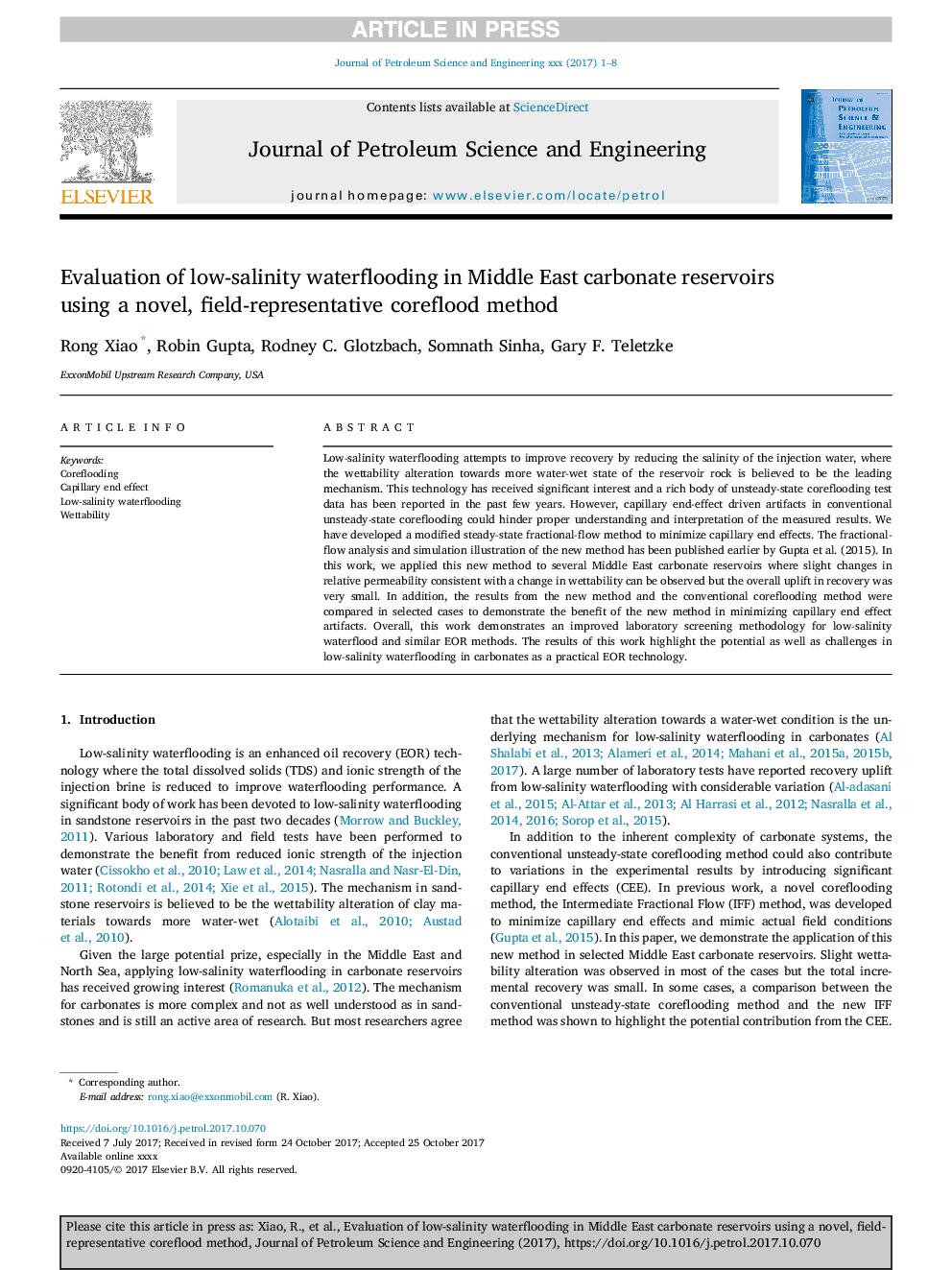| Article ID | Journal | Published Year | Pages | File Type |
|---|---|---|---|---|
| 8125399 | Journal of Petroleum Science and Engineering | 2018 | 8 Pages |
Abstract
Low-salinity waterflooding attempts to improve recovery by reducing the salinity of the injection water, where the wettability alteration towards more water-wet state of the reservoir rock is believed to be the leading mechanism. This technology has received significant interest and a rich body of unsteady-state coreflooding test data has been reported in the past few years. However, capillary end-effect driven artifacts in conventional unsteady-state coreflooding could hinder proper understanding and interpretation of the measured results. We have developed a modified steady-state fractional-flow method to minimize capillary end effects. The fractional-flow analysis and simulation illustration of the new method has been published earlier by Gupta et al. (2015). In this work, we applied this new method to several Middle East carbonate reservoirs where slight changes in relative permeability consistent with a change in wettability can be observed but the overall uplift in recovery was very small. In addition, the results from the new method and the conventional coreflooding method were compared in selected cases to demonstrate the benefit of the new method in minimizing capillary end effect artifacts. Overall, this work demonstrates an improved laboratory screening methodology for low-salinity waterflood and similar EOR methods. The results of this work highlight the potential as well as challenges in low-salinity waterflooding in carbonates as a practical EOR technology.
Related Topics
Physical Sciences and Engineering
Earth and Planetary Sciences
Economic Geology
Authors
Rong Xiao, Robin Gupta, Rodney C. Glotzbach, Somnath Sinha, Gary F. Teletzke,
